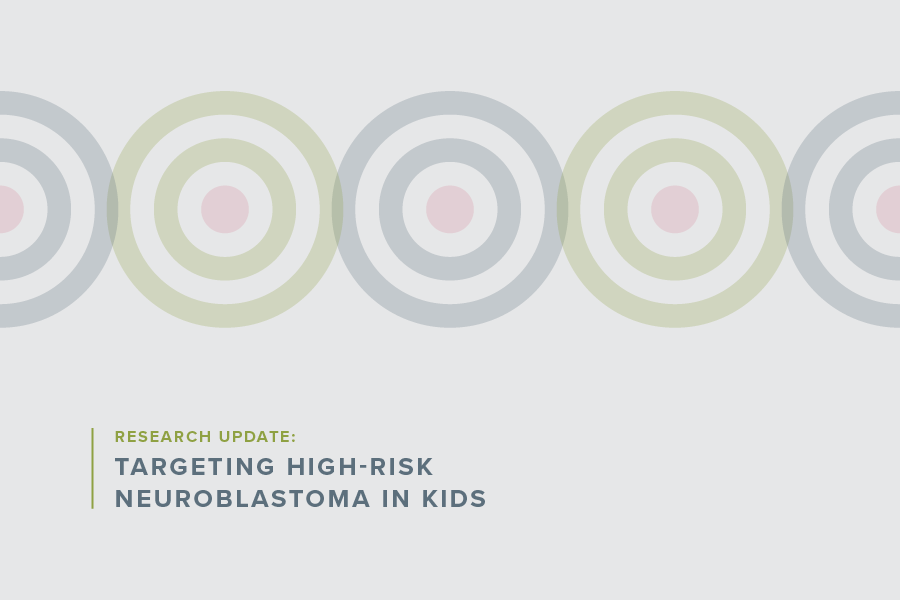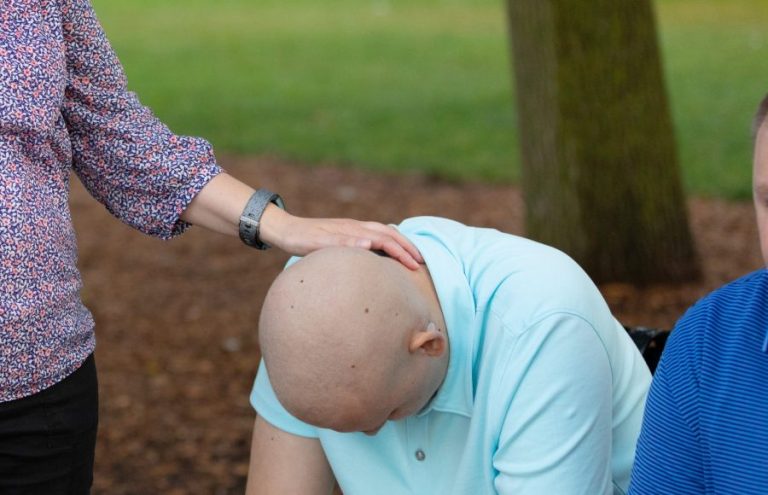When targeted therapies first began to emerge on the adult oncology scene, Anthony Faber, PhD was ecstatic about the possibilities. But after becoming a father, he wondered: How long would kids have to wait before getting their turn at less-toxic cancer treatments?
“Targeted therapies are different from classic chemotherapies that are toxic to all your cells,” explained Faber, the Natalie N. and John R. Congdon Chair in Cancer Research and co-leader of Developmental Therapeutics at Virginia Commonwealth University’s Massey Cancer Center. “Targeted therapies have parlayed the advancements from the genomic and molecular biology revolution, and we’ve been able to see which genes are driving which cancers, which started this whole targeted therapy paradigm. And that really changed the way adults are treated. But unfortunately, that hasn’t really materialized in children.”
That treatment gap inspired Faber to move into pediatric cancer research. With funding from Children’s Cancer Research Fund (CCRF), Faber hopes to discover new cures for high-risk neuroblastoma.
Bringing the promise of targeted treatments to kids
So why has it taken so long to get targeted treatments for childhood cancer? It’s partly because drug companies have traditionally focused on the larger adult market.
“Unfortunately, it’s looked at as the number of patients that are affected and not years lost,” he said. “But if a 7-year-old dies of cancer, that’s 70 or 80 years of lost life. And that’s the equivalent of 10 75-year-olds.”
There’s also a scientific reason. “The problems in the genes in children are different from the problems in adults,” Faber explained. “And unfortunately, those genes are harder for chemists to make drugs against. It’s not that we don’t know which genes are the problems in children; it’s that we’re having trouble synthesizing the drugs to target those genes. And that’s historically been a problem in bringing targeted therapies to children.”
Cancer therapies for adults often target kinases, a type of protein that can affect other molecules in a cell. “In children, kinases usually aren’t the problem,” Faber noted. “One of the best examples of when kinases are actually involved is in a small subset of neuroblastoma, where there is a small percent of patients that have mutations in a protein called ALK, and ALK inhibitors have demonstrated very encouraging promise here. This is great news for kids with mutations in ALK, an example of an emerging targeted therapy paradigm in children. But the majority of neuroblastoma patients do not have this mutation. So that’s really the essence of the problem: It’s the protein that’s different that’s not really druggable in most kids’ cancers.”
But Faber hopes to change what’s possible, starting with neuroblastoma.
Understanding what fuels neuroblastoma
“Neuroblastoma is the most lethal cancer in kids aged 5 years and younger,” he noted. “Neuroblastomas that have extra amounts of a protein called MYCN are particularly dangerous.”
Normal, healthy cells also have some MYCN, but the protein becomes problematic when a cell makes far too much of it. Extra MYCN drives about a quarter of neuroblastoma cases. “But the most important thing about that is when you have MYCN amplification, in almost every single case, that automatically makes you high risk,” Faber said.
In fact, high-risk neuroblastoma now accounts for almost 15% of all pediatric cancer-related deaths. “Which is really high considering how rare it is,” Faber noted. “So our laboratory is interested in understanding how MYCN causes neuroblastoma, and then asking the obvious next question: Can we drug some of the ways it actually causes cancer? For instance, if MYCN was increasing the expression of a kinase that we had a drug for, that would be an example of how we could use the information to find a target that is currently druggable.”
Understanding what fuels neuroblastoma
Faber is particularly excited about TAK-981, a new drug in clinical testing with adults. “What this drug does is blocks a process called SUMOylation that alters the function of proteins,” he explained. “And what we found was MYCN increases and activates the SUMOylation program through a number of different ways, and because the SUMOylation program is so active in MYCN-amplified neuroblatomas, these cancers have become particularly reliant on this process to grow and survive,” he said.
Faber’s laboratory found that TAK-981 stops growth in MYCN-amplified neuroblastoma tumors. “This sensitivity to the drug is dependent on the presence of MYCN, a phenomenon called synthetic lethality,” he said. “That is, the drug only works so well when MYCN is present, therefore turning MYCN against itself and presenting a therapeutic opportunity.”
With funding from CCRF, Faber will expand his in vivo studies to demonstrate that TAK-981 works well in pediatric cancer models and to test if it works with other drugs typically given to children with high-risk neuroblastoma. He’ll also explore why it works.
“If we can understand it, we may find that there are even better targets, or it may give us reason to combine it with other drugs,” he explained.
Seeding hope for the future
It could also open the door to new treatment options for other hard-to-treat cancers associated with mutations in the MYC gene family, including medulloblastoma in kids and triple-negative breast cancer and small cell lung cancer in adults. “That’s why it’s really an important field to fund, especially in pediatrics,” Faber noted.
And that makes Faber all the more grateful for organizations like CCRF. He’s optimistic that he’ll be able to leverage his CCRF-funded project into a larger, federally funded study in the near future.
“This funding is so important because it’s plugging the holes and getting into the places where it’s really needed to get early research started so we can mature the project to a point where we can be considered for those major grants. And without this money, we simply would not have been able to jumpstart this project,” he said. “It really makes an enormous difference.”
Support Groundbreaking Research
Your support propels bold ideas forward and empowers researchers to discover treatments that are better and safer for kids, and ensure every child can have a long, healthy life after cancer.




